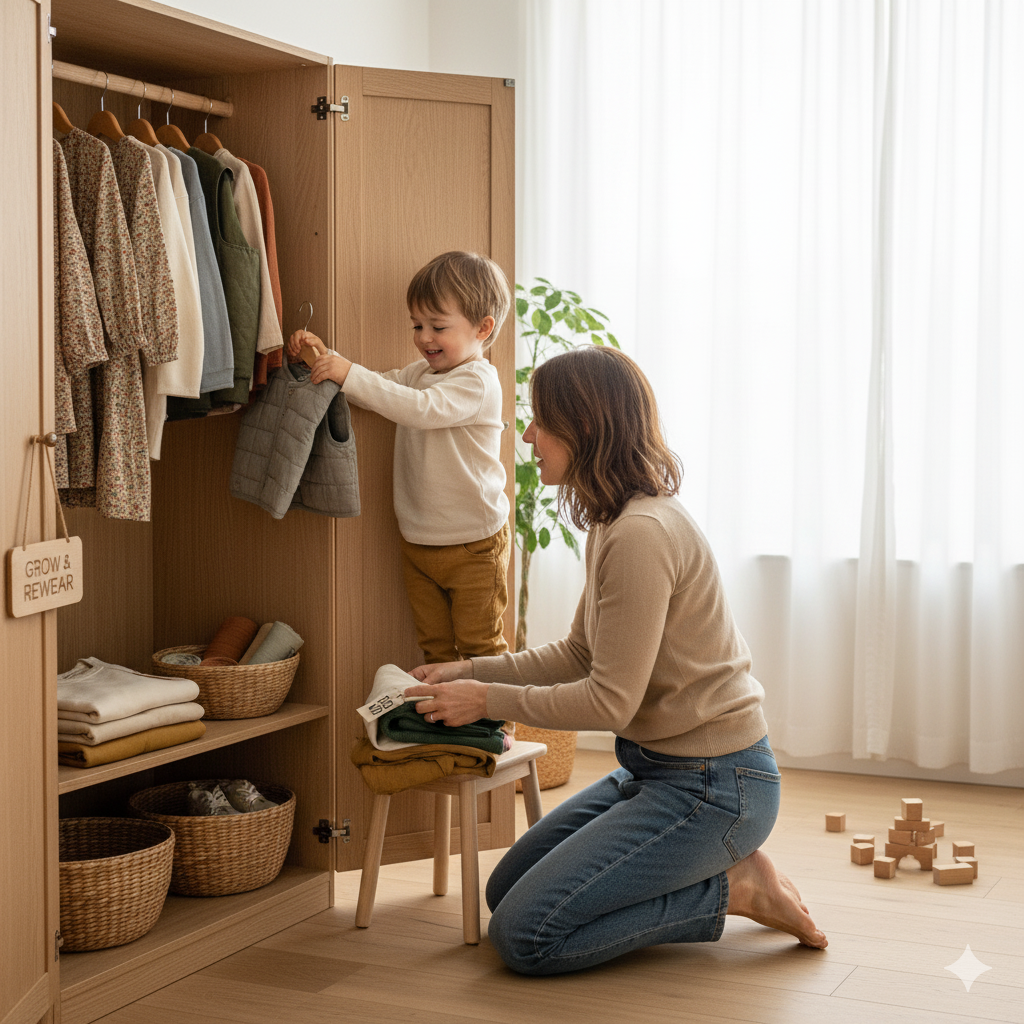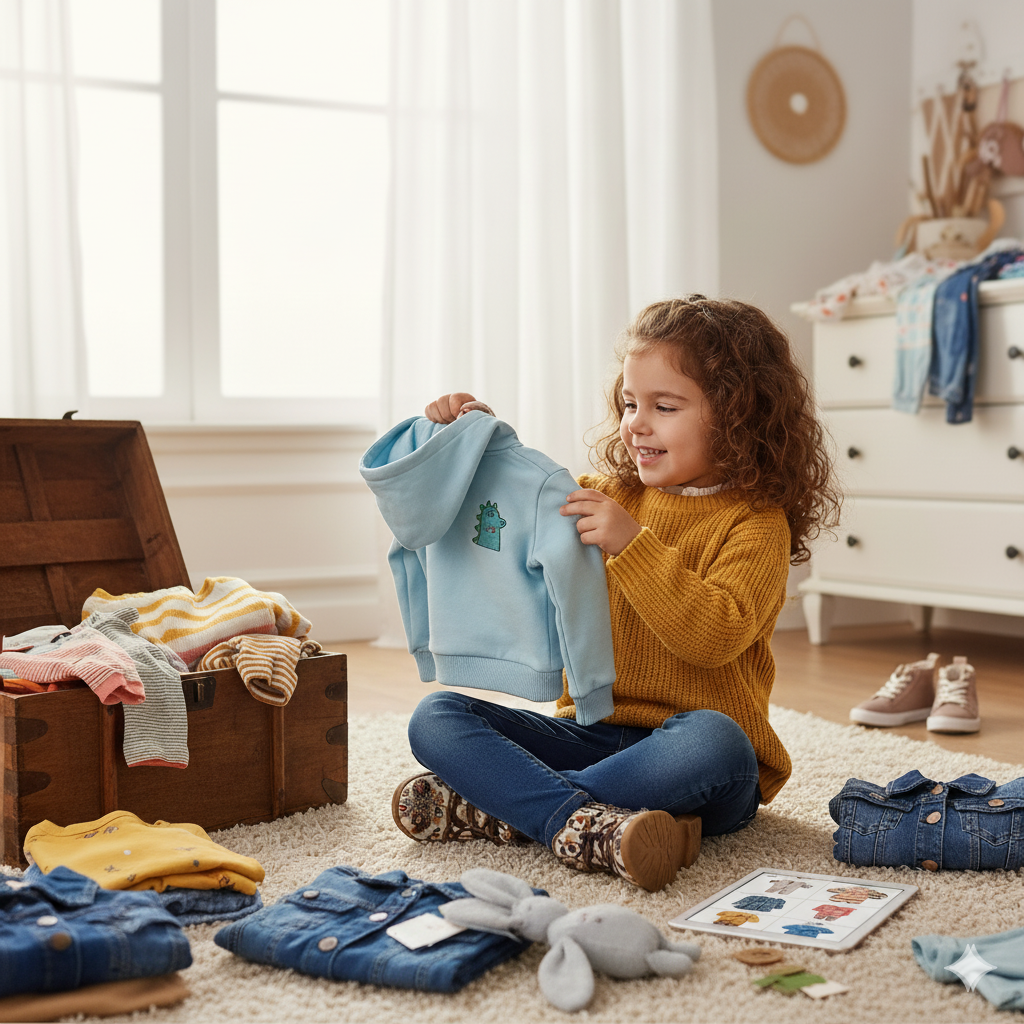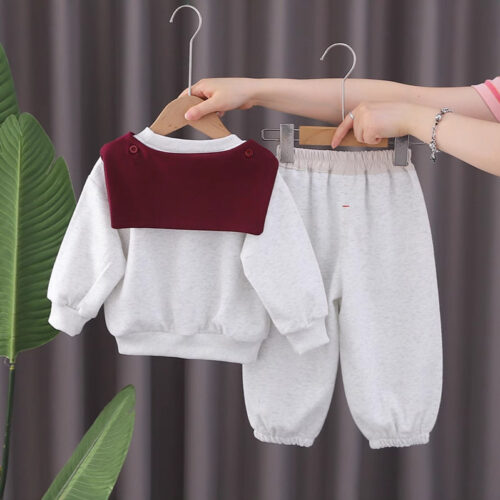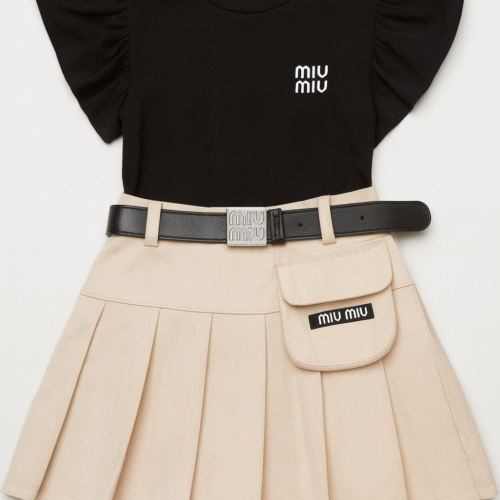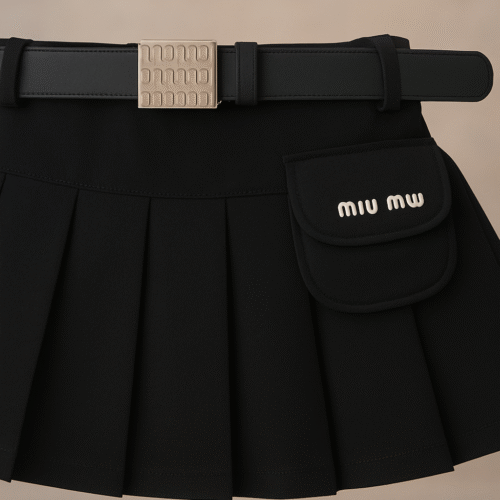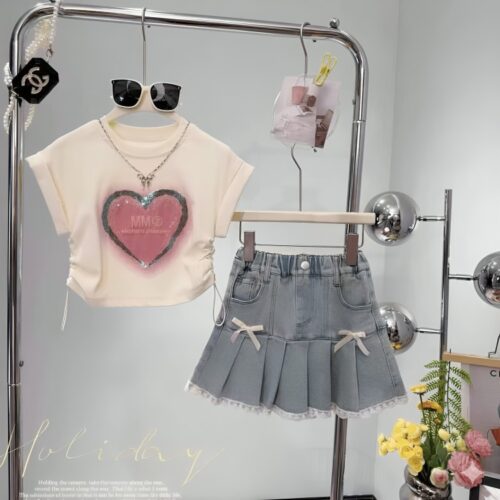Kids grow fast. One day, that cute outfit fits perfectly. The next, it’s too small. This quick change means parents buy new clothes often. It adds up to tons of waste. The fashion world dumps about 92 million tons of textiles into landfills each year, and kids’ clothes play a big part. Fast fashion brands push cheap, trendy items that wear out quick. They harm the planet with pollution and waste.
You can fight back with a smart plan. A sustainable wardrobe for your child mixes tough clothes, smart buys, and reuse tricks. It saves money and helps the earth. This guide walks you through steps to build one. You’ll learn about key choices and habits that last.
Understanding the Pillars of Sustainable Children’s Clothing
Sustainability in kids’ clothes means picking items that last, come from safe sources, and keep materials in use. It cuts down on new buys and waste. Focus on these basics to start strong.
Durability and Quality Over Quantity
Look for clothes built to take a beating. Strong seams and thick fabrics handle rough play and many washes. Skip thin shirts that tear after one tumble.
Investment pieces pay off. A good pair of jeans might cost more at first. But it lasts through spills and seasons. Compare that to fast fashion tees worn just once. They end up in trash fast. Choose brands that test for wear. Your wallet and the planet thank you.
Quality shines in details. Check for double stitching on knees. It holds up to crawls and climbs. Parents rave about these in reviews. They reduce buys by half sometimes.
Material Choices: From Cotton Fields to Skin Safety
Organic cotton feels soft and skips harsh chemicals. It grows without pesticides that hurt soil and water. Linen breathes well in heat, and hemp toughens up quick.
Recycled fabrics turn old bottles into tees. They save resources and cut pollution. Avoid clothes with toxic dyes. They can irritate baby skin or seep into rivers.
Think about touch. Hemp pants might scratch at first. But they soften with washes. Pick GOTS-certified items for proof of green practices. Your child stays comfy and safe.
Strategies for Minimizing Consumption and Maximizing Use
Cut buys by thinking ahead. Reuse what you have. Stretch each piece further. These habits keep your closet lean.
The Power of Hand-Me-Downs and Clothing Swaps
Pass clothes down in your family. Store them clean and folded. Use bins with labels by size. They stay fresh for siblings or cousins.
Join local swaps. Church groups or parks host them. Trade extras for needs. Online apps connect parents too. You score deals without new cash.
This saves big. One study shows hand-me-downs cut clothing costs by 30%. Kids learn sharing early. It’s fun and green.


Smart Sizing: Embracing Oversized and Adjustable Features
Buy a bit big. Rolled cuffs hide extra length on pants. Adjustable waists fit growing tums.
Tops with room grow with your child. They work for play and sleep. Skip tight fits that outgrow in weeks.
What items fit loose best? Sweaters and hoodies. They layer easy. Aim for one size up. It adds months of wear.
Renting Services for Specialized or Short-Term Needs
Rent for special events. Fancy dresses for weddings last one night. Services send clean ones back easy.
Seasonal gear like snow suits rents cheap. No storage hassle. Boxes arrive monthly with picks.
Try apps like Rent the Runway for kids. It cuts costs on rare uses. Perfect for vacations or holidays.
Mastering the Art of Secondhand Shopping
Used clothes offer gems at low prices. Hunt smart to find quality. Make it your go-to for fills.
Thrifting and Consignment Store Navigation
Hit stores mid-week. New stock arrives then. Less crowds mean better picks.
Check for stains or holes. Feel fabric for pilling. Sniff for musty smells.
Value comes from brands. A $5 Patagonia jacket beats new cheap ones. Inspect zippers and snaps. They matter most.
- Look at hems for fray.
- Test buttons for hold.
- Wash tags for care ease.
Successful Online Resale Platform Buying
Search key words like “organic kids cotton” on eBay. Add size and color. Filters narrow fast.
Read seller ratings. Ask for more photos. Measure against your child’s fits.
Local apps like Facebook Marketplace save shipping. Pick up quick. Hunt high-end brands at half price.
Set alerts for deals. You snag rain boots or coats just in time.
Creating a Wishlist Based on Needs, Not Trends
List must-haves first. Waterproof jackets top rainy spots. Skip sparkly shorts that fade.
Needs beat fads. A solid base layer works year-round. Trends change; basics don’t.
Review your list monthly. Cross off as you find. It curbs impulse buys. Your wardrobe stays useful.
Extending the Lifespan: Care and Repair Techniques
Keep clothes fresh longer. Simple care adds years. Repair beats replace every time.
Eco-Conscious Laundry Habits
Wash less. Spot clean spots with a damp cloth. Full loads save water.
Use cold water. It shrinks less and fades slower. Air dry on racks. No dryer heat wears fabric.
Pick plant-based detergents. They rinse clean without harm. One load a week per item works fine.
Simple Mending for Busy Parents
Sew buttons back quick. Use a needle and thread kit. Five minutes fixes it.
Patch small rips with iron-on tape. No sewing needed. Dab stains with vinegar right away.
Keep a repair box handy. Scissors, tape, and patches. Teach kids to help. It builds skills.
- Buttons: Match thread color.
- Rips: Cover with fun fabric.
- Stains: Soak in cold water first.

Upcycling and Creative Reinvention
Turn old jeans into bags. Cut legs for totes. Add straps from scraps.
T-shirts become rags for wipes. Cut into squares. No waste.
Fabric bits mend others. Or make hair bows. Get crafty with family. It sparks joy.
Conclusion: The Long-Term Value of Mindful Dressing
A sustainable wardrobe saves cash over time. You buy less, so spending drops. It shrinks your trash pile too. Kids pick up habits that last a lifetime. They see value in care.
Progress matters more than perfect. Start small. Swap one outfit. Build from there.
Take action now. List your next buys. Check a thrift spot this week. Your child—and the earth—will thrive.

